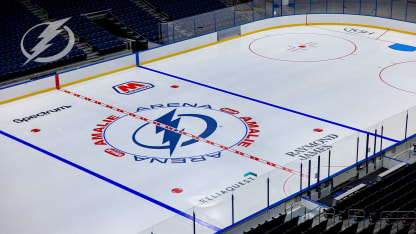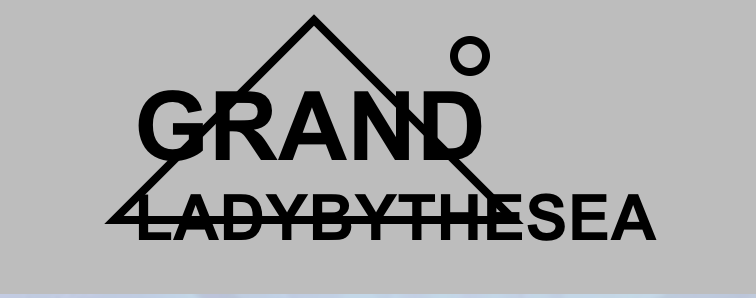Gearing up for game time
Gabby Shirley recaps ice install day at AMALIE Arena to prepare for the 2024-25 season

They compare it to Christmas Day.
The anticipation builds and builds until you open your eyes on the morning of December 25 or, in this case, August 19.
The excitement carries you down the stairs, through the kitchen, and to the tree or, in this case, to the arena floor.
The exhale overwhelms you when every present has been unwrapped or, in this case, when every inch of ice had been perfected ahead of the start of the 2024-2025 NHL season.
Day One of the Ice Installation Process at AMALIE Arena:
The ice operations team arrives at AMALIE Arena around 7 o’clock to prepare the concrete floor. While the 10 miles of piping underneath the floor is cooling it with glycol, a group of four people line the outer edge of the concrete with drywall tape. They place the tape where the concrete meets the boards to prevent the water from escaping through the seam.
The first flood takes place around 2:30 in the afternoon. A batch of hot water is sprayed onto the concrete to burn off the frost that has accumulated there. A second flood follows it but, this time, a batch of cold water is sprayed onto the floor. The individual layers of ice are less than one-sixty-fourth of an inch thick.
Now, it is time to prepare the white paint. The team pours a total of 400 pounds of powder paint into a bin with water and, yes, they mix it with a hockey stick. Then, the mixture is transferred to the container on the back of the paint cart where they add ice cubes, which helps the white paint to freeze as soon as it is sprayed onto the surface of the ice. They flood the rink again to protect the paint.
Day Two of the Ice Installation Process at AMALIE Arena:
The arena is alive with activity around 7 o’clock in the morning. Ali Murdock, who is the assistant manager of the ice operations team, is the first person to step onto the ice and she does it with a roll of red yarn in her hand. That yarn is stretched across the width of the ice to outline the red goal lines as well as the line at center ice. The blue yarn creates the borders for the two blue lines. After all the pieces of yarn are frozen into place, the circles are painted on the ice with an interesting contraption fittingly called a paint stick.
Patrick Jesso, the ice operations manager for the Tampa Bay Lightning, wields this contraption. It is attached to a container of paint that he is carrying between his right arm and his chest and it is also attached to a string at the center of the circle. This string ensures the circles are the correct size and in the correct spot.
While Jesso is creating the circles, Greg Finelli is filling in the lines. Finelli has been painting his entire life and he has been doing it at AMALIE Arena for the past 15 years. He has only assisted with this project one other time and the excitement is etched in his face.
“I enjoy doing this,” he shares as he slides farther and farther down the blue line with his paint brush and his box of blue paint. “This is something different.”
He painted the blue lines, the faceoff dots, and the goal creases but, before he can paint the main attraction at center ice, the ice operations team must install the red line. They use a roll of vinyl mesh material and they freeze it into the ice. They also add the advertisements you see in the ice at this time.
Now, Finelli and his teammates can focus on the Lightning logo at center ice. They utilize a pounce pattern to properly position the logo and, then, to transfer it onto the ice. Essentially, the logo is poked into a massive sheet of brown paper. When colored chalk powder is poured on top of it and pushed through those tiny holes with something that strongly resembles a Swiffer, the desired design is forced onto the ice. The pounce pattern is removed and a light outline of the Lightning logo remains.
The members of the ice operations team take a paint brush and a section of the main attractionand, within hours, the Lightning logo is complete.
The flooding continues for the next two days with more than 12,000 gallons of water used in the process. Eventually, the ice reaches the desired thickness of 1.25 inches, which means it is ready for the start of the season.
Yes, it certainly does feel like Christmas.

